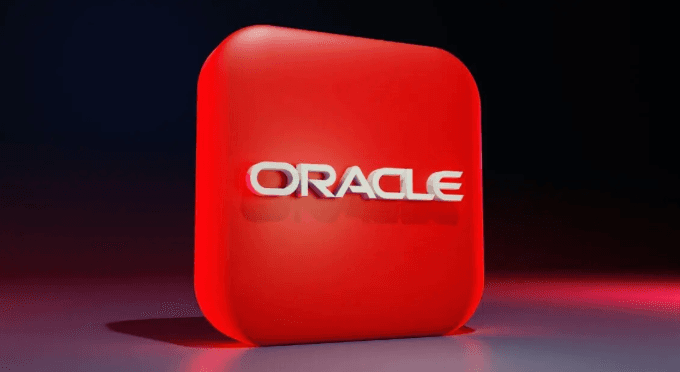Forget the Late-Night Talk Show Drama – Here's What Really Matters for Disney's Stock


Jimmy Kimmel is back on the air...
Last week, ABC announced that the late-night talk show Jimmy Kimmel Live! would be suspended for an indefinite period. Investors in Disney (DIS) – which owns ABC – didn't take the news well.
On Wednesday, September 17, the day of the announced suspension, DIS traded as high as $116.66 per share. By the next Tuesday, September 23, shares were as low as $111.60, an approximate 4.3% fall in under a week.
The stock popped on news that Kimmel's show would be returning. But shares are still down about 2.9% since the suspension news. To us, the entire saga is an overreaction by the market.
Yes, the Kimmel drama is grabbing headlines. But the most important thing for DIS shareholders to know right now is this: It's football season.
The Football Factor: Why ESPN Matters This Fall
ESPN's schedule is packed, and that matters more to the stock than late-night TV drama.
Over the long term, it's the fundamentals that drive share price returns. And no matter what you think of Kimmel's talk show, it's a proverbial drop in the bucket for a company as large as Disney. Sports, on the other hand, is a large enough business to warrant its own segment – one of three that Disney reports every quarter.
You don't have to take my word for it. Plenty of surveys show that football remains wildly popular among Americans.
According to a 2024 survey from Gallup, 41% of Americans say football is their favorite sport. For 2024, the average viewership for a regular NFL game was around 17.5 million. That enthusiasm isn't waning. In week one of this season, 33.8 million people tuned in to watch a rematch of last year's Super Bowl between the Philadelphia Eagles and the Kansas City Chiefs.
Disney's television shows and film releases might be hit or miss. But live games keep people subscribed, keep advertisers spending, and give Disney more room to price its bundles.
That's why – as of the latest quarter – Sports outpaced the traditional Entertainment segment. It brought in $1.037 billion in operating income compared with $1.022 billion from the Entertainment segment. And this was before the NFL and college football seasons kicked off.
The real drivers for the stock are simple: A stronger sports lineup, another round of streaming-plan price increases this fall, and recent results that show streaming is moving toward steady profits while the Disney parks keep throwing off cash.
Put together, that's a better setup than the noise suggests.
Football season is when ESPN earns its keep. Big live games are the shows people don't cancel. They attract the most ad dollars, and they give Disney more leverage when it sets prices for bundles.
We called out the slumping ESPN segment in a May spotlight of Disney, and detailed a path to profitability with the addition of its direct-to-consumer ("DTC") offering.
Well, this quarter, ESPN's slate is loaded with the NFL and college football, and the NBA season returning soon after. That keeps the audience showing up week after week. Even if general entertainment is hit or miss, marquee sports fill the schedule and the ad blocks.
Rights are expensive, there's no debate there. It's the main concern we highlighted four months ago. In our last update, we noted while revenue for the division was up 8%, operating income shrank by 16%.
ESPN's third-quarter operating income was down 7% year over year ("YOY"), showing signs of improving margins.
While streaming premier games comes at a cost, owning the biggest nights is how Disney protects its position while its sports streaming segment matures.
Near-term costs may cut into margins, but the trade-off is clear: More must-watch inventory, stronger negotiating power, and stickier subscribers as we head into winter sports.
Sports is Disney's moat right now. Football gives Disney the leverage to price, bundle, and keep viewers, which is exactly what the stock needs right now. In addition, Disney is making some changes to ESPN that investors should be aware of.
ESPN's New App: Features That Fight Churn
ESPN is moving from "just a channel" to a full sports hub. Its new app puts more live games, better highlights, and cleaner navigation in one place. The goal is to give fans fewer reasons to hop between services (or cancel).
Here is what's new and why it matters:
- Watch more, switch less: Multiview lets fans keep an eye on several games at once. That drives more time in the app... especially on busy football weekends.
- Smarter stats, faster highlights: Live data, personalized feeds, and quick replays make the app sticky. The easier it is to find what you care about, the less likely you are to churn.
- One roof for more sports: As rights roll in through football and into the NBA season, ESPN can feature big events front and center while steering fans to related shows, clips, and replays.
- Ad upside: More viewing time and better targeting usually lift ad prices. That helps offset higher rights costs.
Disney is pulling its services closer together. A stronger ESPN app raises the value of the bundle, which helps when Disney+ and Hulu prices step up in the coming months. If the bundle feels worth it on game day, cancellations tend to fall and revenue per subscriber improves.
Streaming Economics: Price Hikes and the Path to Profits
At the same time, Disney's streaming business is doing what it needs to do: make more money per subscriber and spend smarter.
In the third quarter, Disney's DTC (Disney+ and Hulu) swung to positive operating income of $346 million, up $365 million YOY.
Behind that improvement is simple math: charge a bit more and keep people engaged. The company attributes the turnaround to subscription revenue growth from price increases and more subscribers.
The company will raise its Disney+ prices roughly 20% across the board come October. While the services come with a more expensive subscription fee, Disney is also tightening up its product offerings to reduce churn brought on by the increase.
Hulu is being fully integrated into Disney+ in 2026, creating one app with premium brands, general entertainment, family content... and eventually sports. The combined platform is expected to bring lower churn, higher engagement, and more ad opportunities as the experience gets cleaner and more personalized over the next year.
Average revenue per user ("ARPU") remained steady heading into fall. Disney+ global ARPU ticked slightly higher in the third quarter, and Hulu's ARPU held firm, with both benefiting from increased ad revenue.
Experiences Are the Cash Engine That Funds Everything Else
While Sports and the streaming platforms are trending in the right direction, Disney's Parks and Resorts are still a steady profit-maker. When TV and streaming get noisy, experiences keep the cash flowing to fund new content, pay for sports rights, and support buybacks.
The latest quarter backs this up.
The Experiences segment's operating income rose to about $2.5 billion, up 13% YOY. Domestic parks & experiences made almost $1.7 billion in operating income alone, marking a gain of 22% from the same period last year.
The Experiences boost was largely supported by healthy attendance, higher per-guest spending, and stronger hotel results.
This business smooths Disney's results when media cycles turn. Slight changes in seasonal events, pricing, or better pacing of new attractions can lift profits without a "mega-project" every year.
Earnings Check: What the Third Quarter Actually Said
Disney's latest quarter was solid where it counts.
Revenue rose 2% to $23.7 billion, total segment operating income grew 8%, and adjusted earnings per share ("EPS") climbed 16% to $1.61. Free cash flow year-to-date hit $7.5 billion, up 66% YOY.
Streaming made a profit again.
DTC operating income improved by $365 million to positive $346 million, with subscription growth to 183 million combined Disney+ and Hulu accounts. Management attributes the DTC lift to price increases, subscriber growth, and lower programming spending.
Sports were mixed under the hood. Segment operating income rose to $1 billion year over year, but domestic operating income fell 7% on higher costs for NBA college sports rights. However, domestic ad revenue grew 3% on rate increases.
Experiences stayed strong with segment operating income growing 13% to $2.5 billion. The segment's base, U.S. with Domestic Parks & Experiences, was up 22% to $1.7 billion. Disney acknowledged a $40 million bump from Easter while noting cruise pre-opening costs were a $30 million headwind.
Looking forward, the company tightened its guidance for fiscal year 2025.
Disney now expects adjusted EPS of roughly $5.85, and DTC entertainment operating income of $1.3 billion. Additionally, it forecasts Sports' and Experiences' segment operating income to grow by 18% and 8%, respectively. Management also expects Disney+ and Hulu subscriptions to rise by more than 10 million in the fourth quarter (mostly Hulu via Charter).
The big takeaway from the company's latest earnings is profits are broadening beyond one-offs. Streaming is moving toward steady profitability while parks and experiences keep generating cash for the business. And while Sports costs are higher, the ad rates and airing rights still support the company's long-term goals.
The Jimmy Kimmel Drama Is Just Noise
Jimmy Kimmel is in the headlines, and Disney's stock has been volatile. But late-night TV doesn't drive Disney's long-term results. Football rights, streaming prices, and park cash flow do.
Think of it this way: a nightly talk show can move sentiment for a few days. NFL games, NBA rights, Disney+ and Hulu pricing, and steady park profits shape cash flow for years. That's what sets valuation over time.
If controversy knocks DIS down a few percent in a slow news cycle, it can be treated as a potential buy-the-dip moment... provided the core story (sports, pricing, parks) is intact.
While President Donald Trump's recent comments about filing suit against Disney may scare shareholders, it could also present Disney on a silver platter to value-oriented investors willing to ride a little bad PR.
Our proprietary Stansberry Score backs this up.
Disney gets high marks for financials. Capital efficiency is on the lower side, but that's not entirely surprising. As we just covered, sports, entertainment, and parks can be expensive businesses. But what we're watching closely is valuation.
Disney is already solid in that category. But it could get even more attractive if the stock falls on any more drama between the company and the Trump administration. But even at today's levels, the stock still earns a respectable B grade.
The bottom line is, don't let a talk-show dust-up distract you. The stock follows cash flow, and the cash flow follows sports, streaming economics, and parks.
The late-night drama is just that... drama.
Regards,
Tyler Jarman




